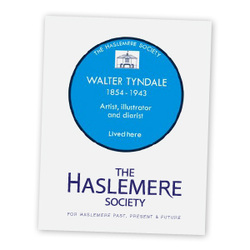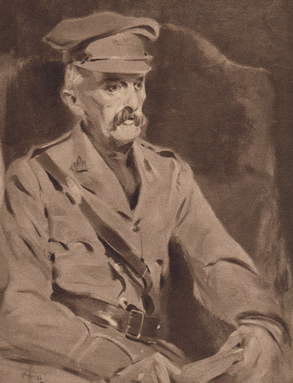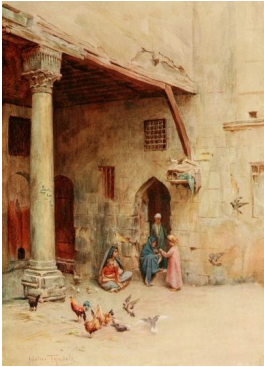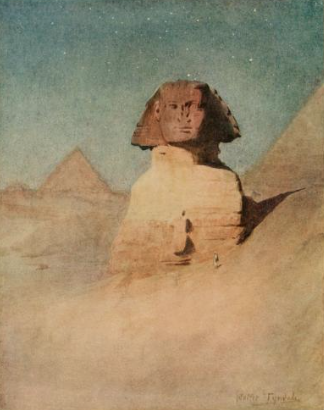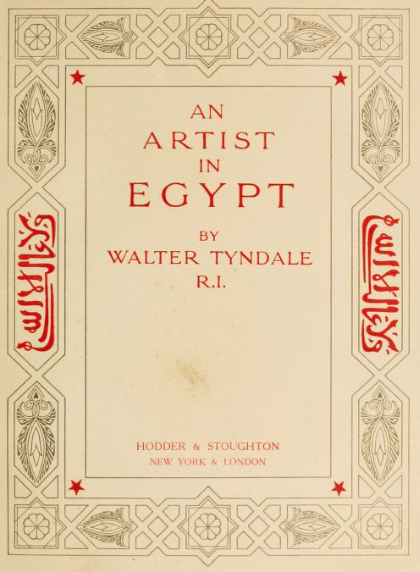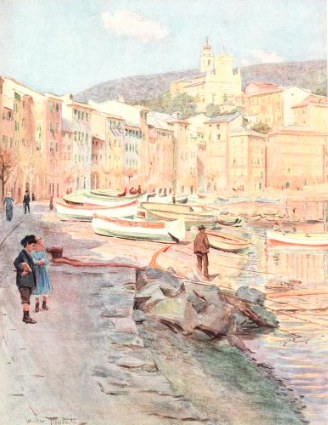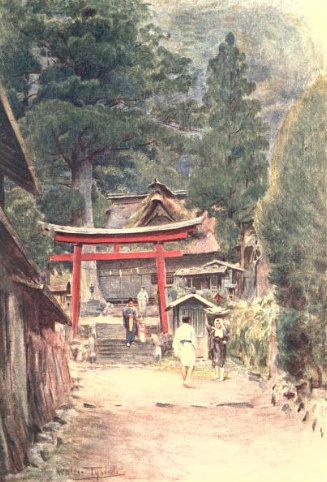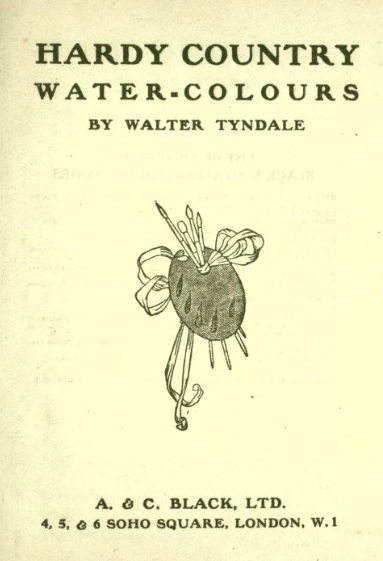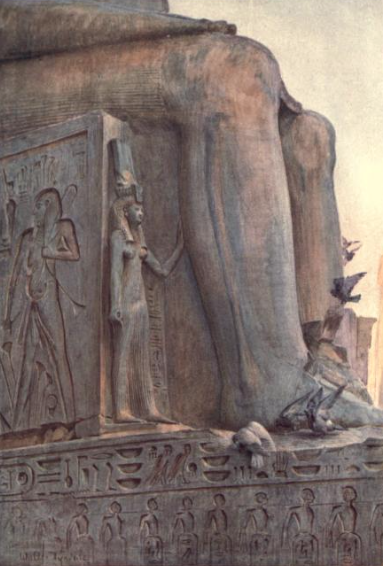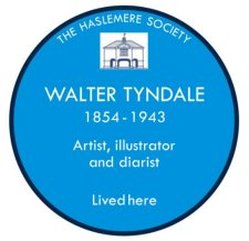
WALTER TYNDALE The sixth plaque was erected in September 2010 at Broad Dene in Hill Road. Walter Tyndale was born and brought up in the medieval town of Bruges in Belgium, and trained initially at the "Bruges Academy of Art". When he was 16, his family returned to England, settling in Bath in Somerset for several years. At the age of 18, he returned to Belgium, 3 years later returning to England in order to make a living from his art. He painted portraits and genre works in oils, and first exhibited at The Royal Academy with a portrait of Sarah Bernhardt. Financially aided by a number of commissions to paint deceased people from photographs he was soon able to marry. Settling in Haslemere, Tyndale started to give painting lessons. One day, visiting a new pupil, a young lady, he was asked to teach her to draw a landscape using water colours. He never touched oil again, and switched to landscapes, the medium for which he became known. He travelled extensively through Europe, Japan, North Africa and the Middle East to produce works for a number of illustrated guides. He also painted landscapes and buildings in the West of England, some of which had inspired Thomas Hardy's "Wessex" novels. Some of these locations were suggested by Hardy himself, who praised the "fidelity, both in form and colour" of Tyndale's work. Tyndale was one of the first illustrators to benefit from new developments in colour printing in the early 20th century, which led to a surge in demand for illustrations for travel books. He wrote and illustrated several volumes as well as providing pictures for other authors. Tyndale was a founding member of the "Haslemere Art Society" and president from 1930 until 1932. During the First World War, he held a commission as a member of the military censorship staff in Le Havre, later Boulogne. Google maps location - CLICK HERE |
